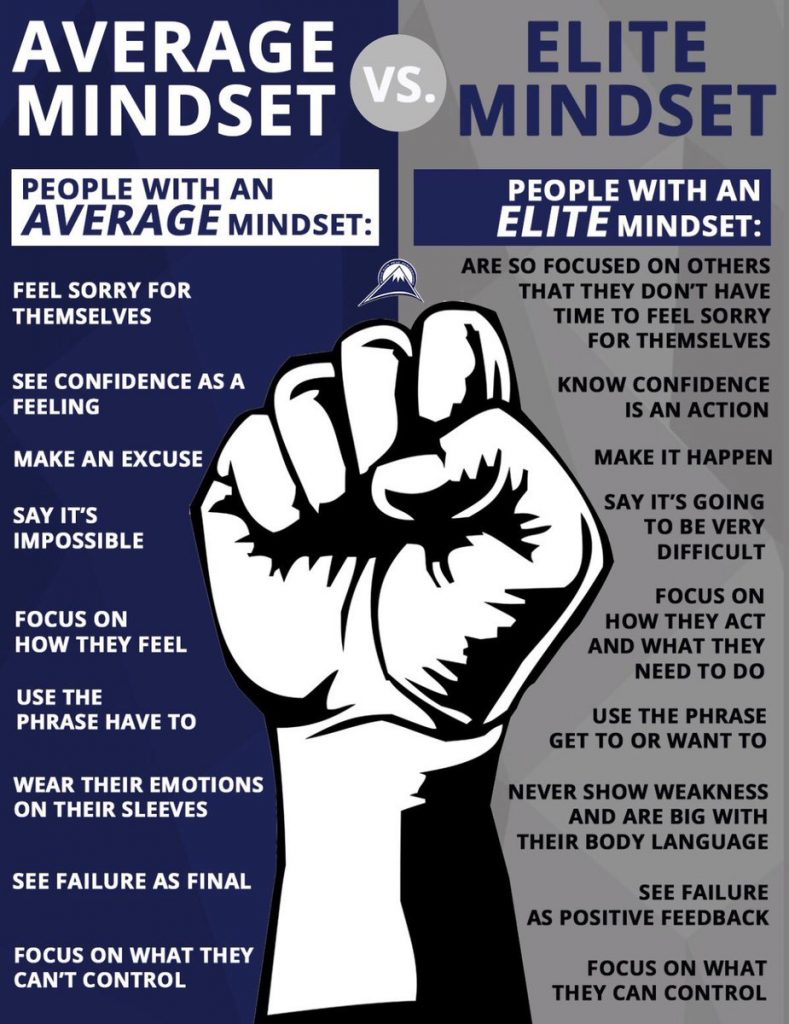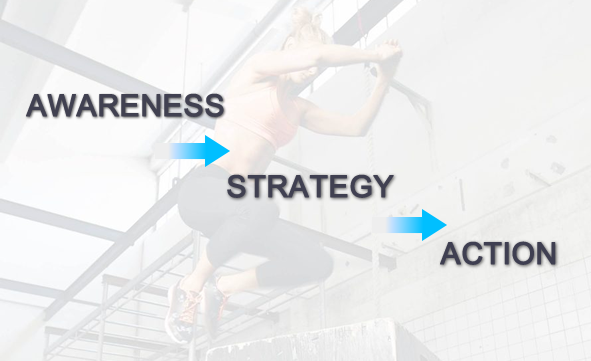
With the rise in popularity of high-intensity training methods, more and more people step into the gym thinking that in order to get a “good workout” they need to get their ass kicked.
They joke about laying on the floor for twenty minutes after their workout, exhausted and unable to move, or crawling down the stairs after “leg day.”
This is how many approach their training in general, and it’s often what clients expect when they walk through the doors of your gym.
A question I’ve received since writing the article on Why High-Intensity Training Has Failed Us All is: “How can I change my mindset?”, or, “How can I change my clients’ mindset?”
People recognize the importance of recovery-driven fitness, but they’re not equipped to combat the forces of a fitness culture that’s telling them an intensity-driven approach is the key to results.
If you don’t know how to help clients change their mindset by showing them the value of a more balanced approach that aims to maximize recovery rather than just intensity, they’ll walk out of your gym and find a trainer who will give them the brutal, no-pain, no-gain, workout they think they need.
And even if you’re not a coach, getting the right mindset is the foundation all of your physical training rests on, and ultimately, the determining factor in your success or failure.
In both cases, the key to keeping clients or getting better results from your training begins with developing the right mindset from the get-go.
That’s why I invited mental performance coach Brian Cain back to help. Brian understands the intricacies of mindset development better than anyone I know — something he’s demonstrated time and time again through his work with the world’s top athletes and coaches.
Today, Brian is going to share proven strategies you can use to help those you work with change their mindset so that you can guide them away from the intensity-driven approach (and failure), and toward the recovery-driven mindset (and success).
Welcome Back: Brian Cain
Hey everyone, Brian here again.
I was pumped to hear the positive feedback from the previous article where I shared tips for combatting stress, and I’m really excited to be back to talk about the fun (but challenging) subject of how to change your mindset.
For the last 15 years, coaches have brought me into their programs as a consultant because they don’t know how to help the people they coach develop the mental skill set it takes to consistently be at their best, reach their goals and achieve long-term success.
The #1 skill set that they must learn to train is the mindset.
Learning how to coach your clients to change their mindset (or to change your own) is crucial for your success. The reality is, people are going to have all kinds of negative, limiting mindsets that will hold them back from success in health and fitness.
From the “intensity-driven mindset” Joel has talked about to letting negativity get them down, I’m sure you’ve seen it time and time again.
Learning how to catch these mindsets from the start and begin to develop a more positive, empowering mindset is a skill you need to develop, and that’s what I’m here to help you with today.
To kick things off, let’s take a look at what mindset really is and talk about the most common myth many have when it comes to developing or changing our mindset.
Why Michael Jordan never missed 6 shots in a row

Before we get into how you can change your mindset, we need to understand what it is and where it comes from.
To put it simply: mindset is a combination of perspective and attitude.
Your experiences and the influences surrounding you will combine to make up your mindset.
The things you currently believe about health, fitness, and performance? That is a product of your experiences and influences (what you’ve read in magazines, on websites, or heard from talking to others).
Good or bad — empowering or disempowering — our mindset will determine what we believe to be true about a given subject (like what it takes to get results in the gym), and perhaps most importantly, how we respond when faced with challenging situations.
When Navy Seals train to make adversity their advantage and to believe that the only easy day was yesterday, they’re building their mindset.
When Michael Jordan missed five shots in a row, he couldn’t wait to get the ball again because he never missed six in a row — that was a product of his mindset. Despite a situation where most people would see “failure” (missing 5 shots in a row), Jordan was able to stay motivated and positive.
The mistake many people make is looking at examples like this and thinking: “Man, Michael Jordan sure was lucky to be born with the confidence to believe that he’ll make the next shot and stay calm under pressure!”
In others, words, many of us think that our mindset is something we’re born with — NOT TRUE!
This is one of the biggest “mindset myths” that I want to help you destroy today.
Fixed or Growth? The key to success in health, fitness, and performance
Stanford professor Carol Dweck’s research on mindset clearly shows that people take one of two perspectives when it comes to their belief on where ability comes from: fixed or growth.
People with a “fixed mindset” believe that abilities are handed out at birth and largely out of our control.
On the other hand, people with a “growth mindset” believe they can learn and develop any given ability if they’re willing to invest effort or study.
Here’s a truth you must embrace to experience success, for yourself and those you work with: With a growth mindset, no matter where you’re at now, you can change develop the skills you need to succeed.
If you’re riddled with self-doubt now… with practice and focus on shifting your mindset, you CAN become confident.
If someone has a mindset that the only way to get results in fitness is by going as hard as possible, as often as possible… with the right coaching and practice, they can shift their mindset to one that values an approach that emphasizes recovery.
Recognizing (and helping others recognize) the importance of a growth mindset is the first step.
But in order to actually start developing a better mindset, you have to be able to identify the difference between an “average” and an “elite” mindset, and then put a plan into place to train the skills needed for success.
9 components of an elite mindset
Just like there are “markers” for elite health and fitness, there are specific attitudes and behaviors that embody the type of mindset we need to succeed.
Here is a list of 9 simple ways you can identify if you are working with someone who has an average mindset; or an elite mindset.

People who trend more toward an “average” mindset tend to see the world through a fixed lens, viewing ability as the primary influence of success, and as something you either have or you don’t.
People who trend more toward an “elite” mindset see the world through a growth lens, viewing ability as something that, along with mindset, can be developed with practice and coaching.
The goal is to possess the attitudes, behaviors, and traits associated with an elite mindset.
Knowing what the difference between an average and an elite mindset looks like is a step in the right direction, but how do you assess that effectively?
And just as importantly: how do you help someone who has negative or limiting attitudes associated with an average mindset change so that they can succeed?
Through my work, I’ve found that making a change to a mindset growth usually follows a 3-step process. This is a process that I learned from Harvey Dorfman, the late sports psychologist for the Boras Corp and author of The Mental Game of Baseball.
Awareness → Strategy → Action
This process should look familiar because it’s what you’re likely already doing to develop the physical side of performance!
The first step — awareness — involves evaluating mindset and is where the art of coaching comes into play. To do that, we need to go back to the foundational aspect of good, effective coaching: the assessment.
The most important assessment you’re NOT doing
Before you perform a movement screen or test a 1-rep max, you should be assessing mindset.
Now, before you spill your coffee in your lap and scream obscenities at the screen in front of you, I’m not saying that traditional health and fitness assessments aren’t important.
That’s obviously a crucial part of effective — and responsible — coaching, and a big part of getting the most out of your own training program.
But I AM saying that assessing mindset is just as important, and should be done first. Because if you or your client don’t have the right mindset, it won’t matter how great you are on the physical side of training, failure is likely.
Having the right mindset is THAT important.
As a coach, it’s your job to make sure the people you’re working with have the right mindset because that ultimately drives everything else.
If clients come to you thinking they need to destroy themselves in the gym and see how much they can suffer through to get results; it’s your job to help them develop a mindset that values consistency over intensity, prioritizing stimulus and recovery.
Same goes if you’re just someone who loves training and wants to get the best results possible for yourself: overlook the importance of mindset, and everything else will begin to crumble (if not sooner, then later).
To help, I want to provide a simple guide to assessing one’s current mindset, and then provide a plan of action for making some changes, if needed.
The key to an effective mindset assessment is asking the right kinds of “targeted questions.” The goal is to discover how the person you’re working with responds to challenging situations and to discover their current perspective toward fitness and training.
The sooner you can discover preconceived notions that may negatively affect fitness and performance results, the sooner you can begin to correct them.
So you might ask things like…
Question: “What does it mean to have a “good” or “effective” workout to you?”
What you’re looking for: Do they talk about working out and eating healthier like it’s a chore – something you’re supposed to suffer through? (intensity-driven mindset), or do they recognize the need for balancing the stressors inside the gym with everything they have going on outside of it? (recovery-driven mindset).
Question: “What’s the biggest challenge standing in the way of getting the results you want right now?”
What you’re looking for: Do they blame someone else or do they take responsibility? Do they use “impossible” or “difficult” language or focusing on things out of their control like an average mindset, or are they using “hard, but possible” language and focusing on what they can control, like an elite mindset?
Question: “Think back to a stressful/challenging situation you’ve faced recently, what kinds of thoughts and self-talk did you experience? (For an athlete, this might be something during competition; for a general population client, this might be a time when they skipped a workout or messed up on their diet).
What you’re looking for: Do they focus on how they felt, or let the view that “failure is final” spiral into more bad decisions (average mindset), or do they focus on actions and how they got back on track, viewing the obstacle as a learning opportunity (elite mindset)?
These are just some ideas to get you started. Feel free to use them as outlined, add to it, or adjust based on your specific situation.
As a coach, this should be part of your initial assessment process. And for someone looking to improve their own fitness and performance, grab a pen or open a document and answer these questions for yourself.
Another assessment I use is a worksheet that has the person I’m working with outline what they remember about their body language, focus and self-talk, situations and feelings (BFSSF) when at their best, and at their worst, and then have them compare the two.
The answers from these targeted questions will help you identify mindsets — like the intensity-driven mindset — and other limiting mindsets from the get-go so that you can immediately begin to recognize and educate about why that may not be the best approach.
And coaches — this is a great opportunity to position yourself as an expert who not only knows your stuff, but who also truly wants the best for those you work with.
I can’t stress this enough: a mental assessment is something every coach should be doing with each person that walks through their doors, and something everyone else should be doing to get the most out of their training.
Once you’ve conducted an initial mindset assessment, and you have identified areas where improvement and change is needed, the next step is putting a mindset training program into place to correct any mental patterns that will hold you or the people you’re working with back from success.
Next Steps: Strategy + Action

Mindset is something we can train and develop just like a muscle. That’s the whole idea behind the fixed vs. the growth mindset.
This is often a relatively new concept — for both coaches and average Joes and Janes alike who just love to train.
The good news is we can approach “mental performance” the same way that we do physical training.
We’ve covered the “awareness” aspect of this through our assessment, but the initial mindset assessment is just the starting point of an ongoing process.
Next, we have to develop strategies for coaching the areas of mental performance that we’ve identified need work, and consistently “train” them like we would any other health factor (strength, conditioning, mobility, etc.).
How do you do this?
By using what you’ve learned during the initial assessment along with observations of response to challenging situations to continue coaching and developing an elite mindset.
In the same way that you provide a “cue” to improve exercise technique, you make it a habit to ask your clients questions about challenges they are facing to be consistent and reach their goals, assess which “average mindsets” are getting in their way, and provide feedback to help them develop the mental skills they need to succeed.
This should be a consistent, ongoing process included in your coaching.
The same thing applies to those looking to improve their own results.
Mess up on your diet? Worn down by stresses of life but still feel like you “should” go all out in the gym? How can you assess situations like these and build a more positive mindset? That’s the goal.
Obviously, this takes effort — but that’s what being a “great coach” and getting great results is all about — paying attention to the details most people gloss over!
I guarantee the time and effort invested will be well worth it.
By continually applying the 3-step process I’ve outlined today — awareness, strategy, and action — you can begin to systematically coach mental performance and develop the skills you and your clients need for long-term success.
Learn to coach the mental side of health and fitness with the Bioforce Certified Conditioning Coach Course
Joel here again.
Being able to identify your client’s mindset and begin to intentionally train them to develop the resilience, optimism, and awareness they need to focus on what matters is key for getting long-term results.
That ability (or lack thereof) to coach the mental side of performance is hands-down the biggest gap in the fitness industry today.
This is bad news because we as coaches must close this gap in order to better serve our clients and provide the expert coaching they want and deserve.
But it’s also good news for you because it creates a huge opportunity to separate yourself from the competition and become a more complete coach.
Moving forward, great coaches — those who become known as the go-to “experts” in their geographical area or niche — will separate themselves by learning how to coach their clients to mental AND physical success. No doubt about it.
Applying what you learned in today’s article alone will set you apart from the majority of fitness coaches and personal trainers out there.
And that’s great place to start, but there’s more to learn (a lot more).
As mentioned last week, I’m bringing Brian on board to add some brand new content to my certification course for coaches opening February 26th.
There’s going to be a whole new course module designed to teach you how to be a more effective coach by helping people develop the mental performance side of their game. He’s going to show you how to make sure people have the right mindset, how to build a culture around you that drives success, the best strategies to improve consistency, compliance and self-control, and much more!
To learn more about this complete self-study system — and to save over $200 — join the special Insider’s List below. Spots are first come, first served.

Comments